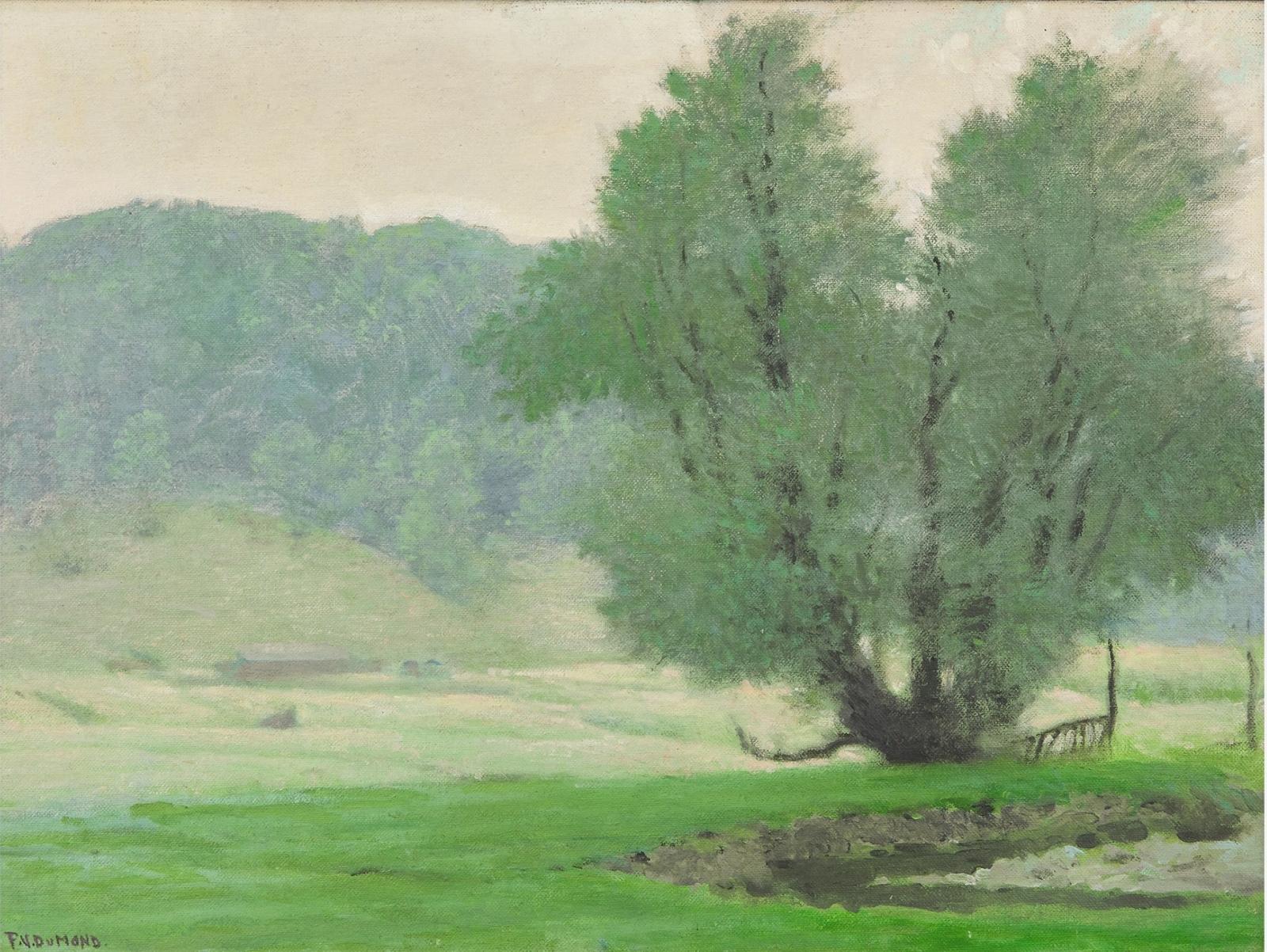artist
American Impressionist Frank DuMond is best known for his lyrical paintings of everyday rural scenes—as well as for his influential career as an art educator. Born in Rochester, New York, the artist traveled to France in 1888; there he studied drawing in at the Académie Julian, worked en plein air in the countryside, and exhibited at the Paris Salon. Over a nearly six-decade teaching career at New York’s Art Students League, he trained generations of American artists, including Georgia O’Keeffe and Norman Rockwell. “Silently glowing over this whole landscape is a rainbow,” DuMond would tell his students. “You must learn to see it. It is there always, and if you can get hold of that, you have something worth going after.”
Description
provenance
Private Collection, Florida.
Freeman's, Philadelphia, 2013.
Private Collection, Pennsylvania, acquired from the above, 2013 - 2021
Freeman's, Philadelphia, 2021










